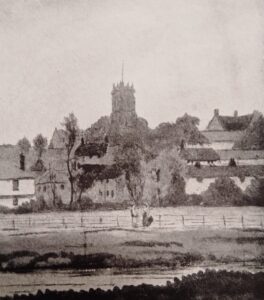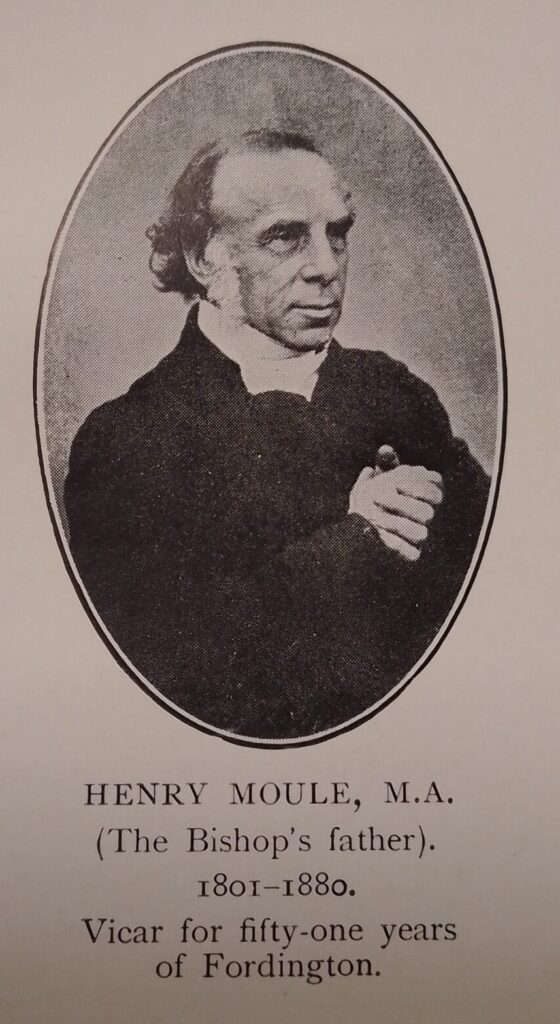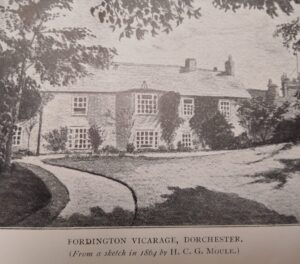Welcome to the eighth part of our series exploring the history of Icen Cottage, Fordington. In previous blogs, we have introduced you to the cottage, shown you some of the earliest documents relating to the cottage, discussed some of the problems when trying to identify the people who lived in the cottage, introduced George Cull as one of the previous owners, taken a look at the Mitford family and Arnold family in the 1830s, explored the lives of the Wickham family who lived in the cottage; and looked at the Hardy connection to some of the former occupants.
In this blog we wanted to put Icen Cottage into a little bit of context, by looking at what life for those who were living in Fordington would have been like through the 19th century.
—
In ‘The History and Antiquities of the County of Dorset’ by Rev John Hutchins Fordington is described as:
“a large village adjoining to Dorchester on the east that was anciently a suburb to it, and part of it.”

It was a crowded and poor village. Hutchins continues,
“The poor of this parish being very numerous and distressed, William Morton Pitt, esq. in the year 1795 established a spinning-school and weaving and bleaching here to promote industry among the inhabitants.”
Icen Cottage was not in one of the poorer parts of the village, but the large numbers of impoverished people living in close proximity would have had an impact on their lives.
We can gain an insight into what life would have been like for the more affluent residents of Fordington in the book ‘Memories of a Vicarage’ by Handley C.G. Moule, the son of the Reverend Henry Moule.

Henry Moule became the vicar of Fordington in 1829, around the time the last of the Masters family were considering leaving Icen Cottage, and remained in that post until his death in 1880.
Moule was a forceful character who had a huge impact on life in the parish. He was an enthusiastic evangelist who appears to have been a great contrast to the previous incumbent.
He almost immediately antagonised most of the congregation due to his fiery sermons, which were thought of as ‘Methodist’, a great evil in the eyes of the good people of Fordington, and by falling out with the choir, who quit the church. As a consequence of this in the earlier part of his time in Fordington his congregation was small.
He then further upset his parishioners by being instrumental in stopping the popular horse racing meetings because he disapproved of the drunken behaviour he saw exhibited there. His son H.J. Moule recalls the villagers showing their displeasure with his father and the rest of the family being hooted at, the railings of the vicarage being pulled up and even an attempt to break the vicarage windows.

The 1830s were a time of great upheaval for rural areas with agricultural disturbances such as the swing riots and the tensions that in Dorset led to the sentencing of the Tolpuddle Martyrs. Many of the residents of Icen Cottage had connections with landed families or employers of farm workers and they would certainly have been aware of these events and probably worried by them.
The Rev Moule’s response to the poverty surrounding him was to try and help his parishioners. He set up a Sundal School in 1832 and a Day School in 1837. ‘The History Of Fordington’ by Rev R.G. Bartelot describes how, in the very severe winter of 1838 when the poorer inhabitants of the parish were almost starving due to the scarcity of labour, he collected subscriptions so he could employ labourers to lower the hill between Dorchester and Fordington, making it easier for those in lower Dorchester and West Fordington to get to church. This project ultimately also unearthed many Roman artefacts.
These actions may have helped Moule’s reputation amongst the parishioners a little, but the real turning point in the relationship between the vicar and his congregation were the cholera epidemics of 1849 and 1854. Moule worked tirelessly helping the sick in his parish and trying to stop the spread of the disease.
The devastating effect of the disease can be clearly seen in the Fordington burial registers. The 1849 outbreak began in August, when the town was already struggling with a small pox outbreak. The registers are marked with a c to show those who died of cholera and sp to record deaths from small pox and show 17 deaths from cholera between August 17th and September 29th.
The 1854 outbreak was even deadlier. It began on 1st September and by the end of that month 30 people had died of the disease. Moule was performing multiple funerals a day, the most being the five burials recorded on the 11th September, but the effort he and others put in to fighting the outbreak did prevent it spreading to Dorchester.
Moule’s experience in the 1854 outbreak convinced him there was a link between cholera and poor sanitation and he went on to patent the dry earth closet as a healthier alternative to cess pits.
Moule died in 1880 aged 79. He had been the vicar of the parish for 51 years and he and his wife are both buried in St George’s Churchyard.
In our next blog we return to the Lock family of Icen Cottage, focussing on three women who ran a school there.
—
If you’ve missed the earlier blogs in this series, you can view them here:
An Introduction to Icen Cottage
Icen Cottage – The Earliest Documents
Icen Cottage – The Masters Family – Too Many John Masters!
Icen Cottage – The Mitfords and The Arnolds

